Where to Ideas come from?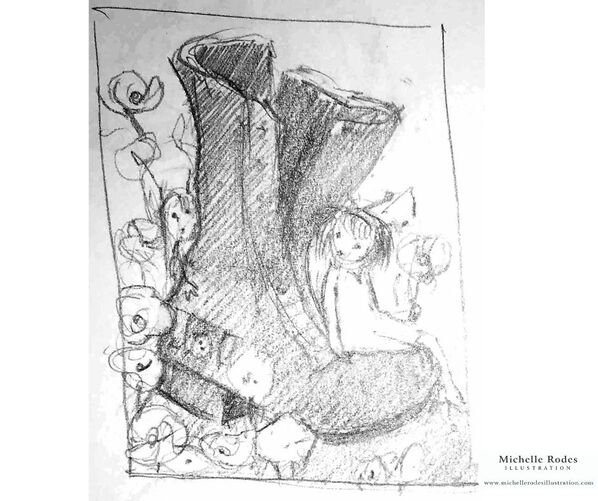 In this case, I had done a thumbnail sketch of a couple fairies playing in an old boot. I found it in a drawer and decided to pull it out and see what I could do with it.
0 Comments
Carlos is done digitally on procreate. He happens to be the Yoyo Champion of the World. Or so he says.
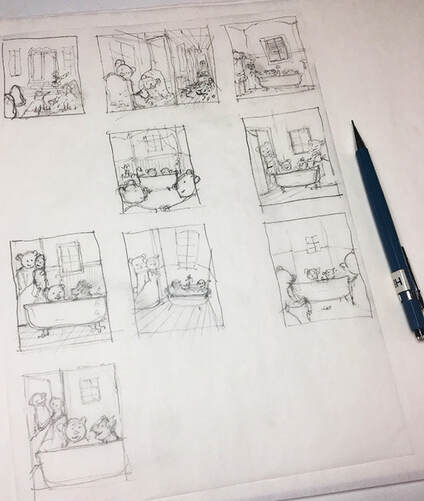 I recently did new illustrations for my portfolio, using the 2019 SCBWI LA Conference Illustrator Intensive: A Modern Retelling of Goldilocks and the Three Bears. Here's How I did the illustrations...Compostions. I start with loose thumbnail sketches for ideas and concepts. Then slightly larger compositions from the thumbnails, of my favorite composition. 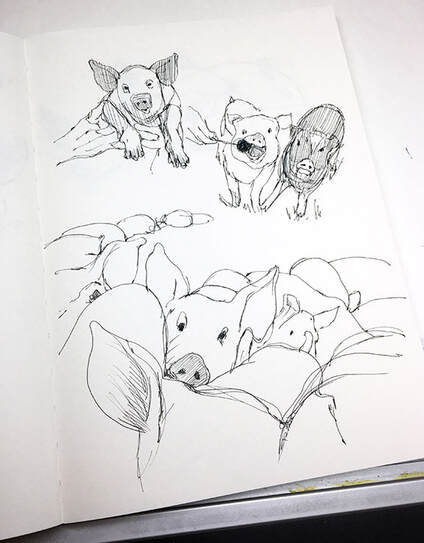 I then sketch the layout larger, to place all the elements. I gather reference images which help develop iterations of the finish drawing. The final art size will be big enough to capture the details. Sketching & ReferenceBetween each sketch iteration, I get feedback and critiques. My crit partners note the characters look too doll-like and need to be more expressive. So I do more research and sketching in my sketchbook and on my iPad. Pigs and bears! What could be more fun? I revise the sketches with the new bear features and make adjustments to the composition to simplify the background and focus on the kids in the tub. 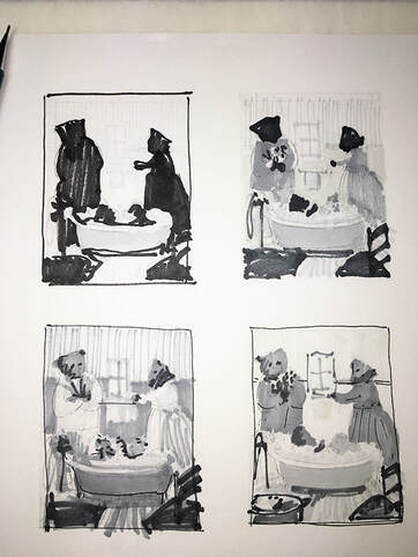 Value Studies On to the Value studies. I start by doing a black and white "Notan" with a thick marking pen. Then I do some value studies to determine the light and dark mood of the piece. Ok, ready to move to color! 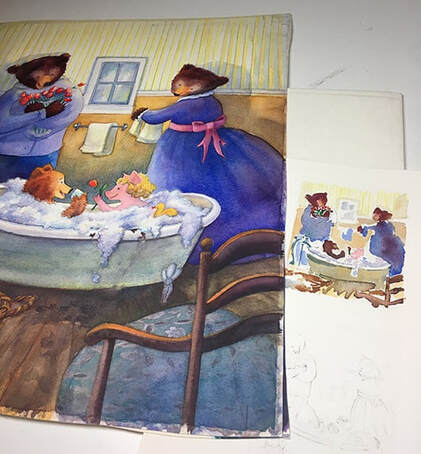 Color Studies Before I start painting, I try various watercolor mixes and blends, keeping notes to figure out how I will mix my colors and create a palette. I narrow it down to 13 colors. Is that a lot? On my watercolor palette, I tape over the colors I will not be using, to force me to "limit" my palette. Sometimes I sneak my brush under the tape anyway! I then do a small Color Study for the illustration, based on my value study and color notes. This is my favorite part of the process. 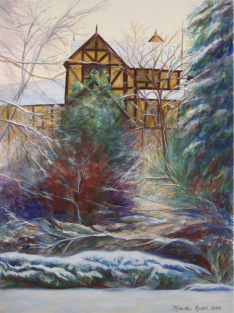 Nestled in a high sierra valley, at the foot of Mt. Ashland is the town of Ashland, Oregon. Home of the Oregon Shakespeare Festival, Lithia Park, and the nearby vineyards and chocolatiers of the Willamette Valley, it is also renowned for its crisp mountain stream and natural sulpher springs, which have been hailed as the “Fountain of Youth”. To my knowledge, the sulfur springs of Lithia Park are no longer available to drink from in the town square fountain, but when I visited as a child, the fountain did flow, and I drank from it. It tasted like rotten eggs, but its effects were true. I was enchanted with never ending youth and the longing to return to this place year after year. As an adult, I return with my husband for short reclusive getaways to relax, stroll the park and shops, and take in the theater. In the winter we drink coffee with the local elders before a leisurely day on the friendly slopes of Mt. Ashland. On one such trip in 2008, we awoke on Christmas morning to find a soft light powder of snow had fallen in the town. For a few hours we padded about, wallowing in the quiet moments as the new day began. The paintings that followed seemed to integrate nature, architecture and light, with the hint of man only visible in footprints, tire tracks and the statues that govern the place. The paintings of this series are the results of that morning and the quiet tranquility of the town in winter. Link to Ashland Series.
This month I had the pleasure of presenting to the East Bay Artist Guild on the topic of "Art from an Interior Designer's Point of View". Having worked in the field for over 20 years, it was quite an experience to go back through the years and consider what I know that I could share with fellow artists. I started seriously working in interior design while I was still in college studying illustration. Houses and their unique character have always been an important part of my work.
At the high end, where I mostly worked, I was in the practice of keeping the visual artist in me far from the design office. The motto was "don't try to be both to your clients". To combine the two in any way (other than just using skills to execute the interior design process) would be considered a poor execution of design. But the artist in me could appreciate and help promote the work of other artists if I had the opportunity. Some of my basic tips for artists have to do with realizing that designers are professionals in business, and when working with artists, they expect the same. To transact with designers on a business level, artists must provide adequate levels of documentation of their work to facilitate the designer's ability to promote and sell it to their clients. In this day of electronic everything, the more electronic renditions of the artwork, promotional materials, business documents, sales platforms, and social media venues, the better. The long and short of it is, if our clients and customers are going online, then so must we! It was fun to sift through photos of binders and reams of documents that used to make up a design office, and to know, that while some are still using fax machines, the large majority are fully digital, and pushing less paper and more "paperless". With these lessons in mind, to consider my own art practice, the value of the actual artwork becomes more nostalgic with each technological advancement. Digital and print reproductions are easy to create and will continue to get easier and better. Certainly, the implementation of digital age business practices is an on-going and ever changing preoccupation for all of us. But as we continue to chase the electronic moving target, the real deal original hand painted artworks, in my estimation, will only get more valuable. I find myself evermore excited and committed to making original art, one painting at a time! 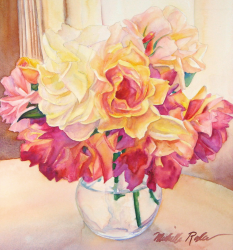 ViewPoint by Michelle Rodes A gesture is a small action that makes a meaningful impact. When we feel strongly about another person, we might say with a card or flowers what we are embarrassed to say outright. The less we say, the more impact we make. Give a piece of chocolate and you are on your way. Gestures in art works the same way. In gesture drawing we find a mental and physical state that is relaxed and loose. We use the medium to make simple, quick, fluid marks that “capture” the subject. A few simple lines can tell the whole story. As a musician practices scales, an artist does gesture sketches before embarking on a longer painting. We go after the essence of the form and sometimes the gesture in and of it self can be extremely beautiful. Like a memorable moment a gift is received, versus a lifetime of shared days. The gift giving marks a moment when we recognize our life together and what it means. Some artists find gestures challenging perhaps because not every drawing turns out. We fear, “how can I capture the feeling?” If it doesn’t look “good” it could have the opposite effect than we intend. I think we are sure to fail if we judge our selves too much in the process of art making, for we might quit before we even start. We have to open our heart, mind and intentions, and just give it our best shot! We don't know how the gesture will turn out, and we really can't control it very much. What we can control is our actions, with each try, one at a time, with genuine thoughtfulness and practice seeking the essence. If we can express our impressions and feelings with a lasting mark, then we can call it art. |
blogSNIPPETS FROM MY ART LIFE. Archives
May 2022
Categories
All
|
|
Follow
|
Michelle Rodes, 2022

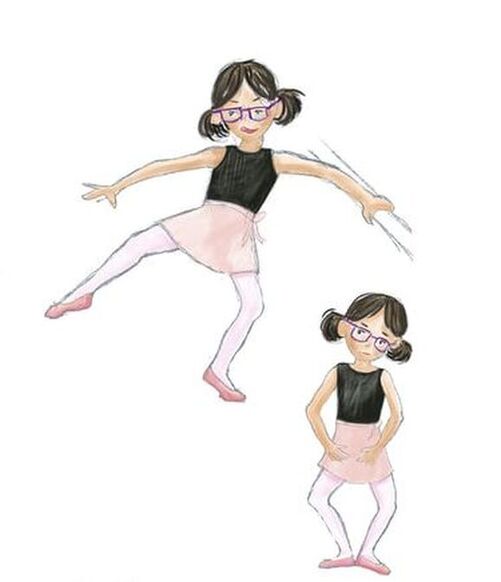
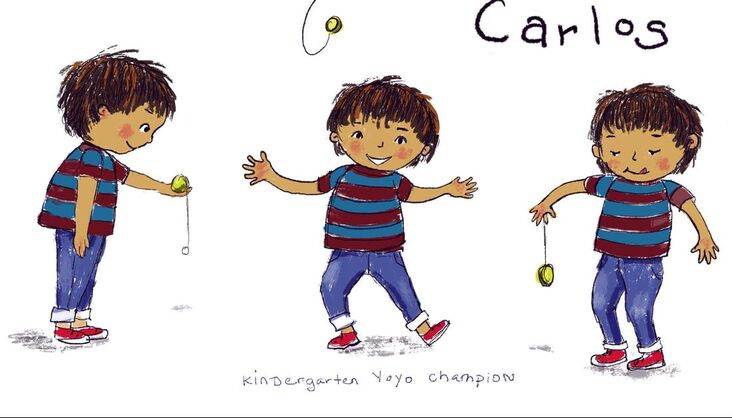
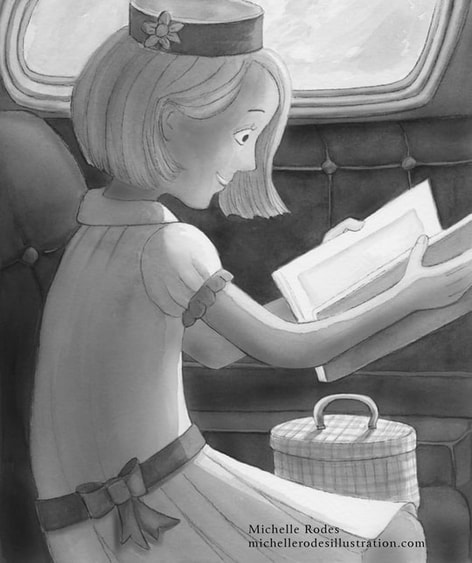
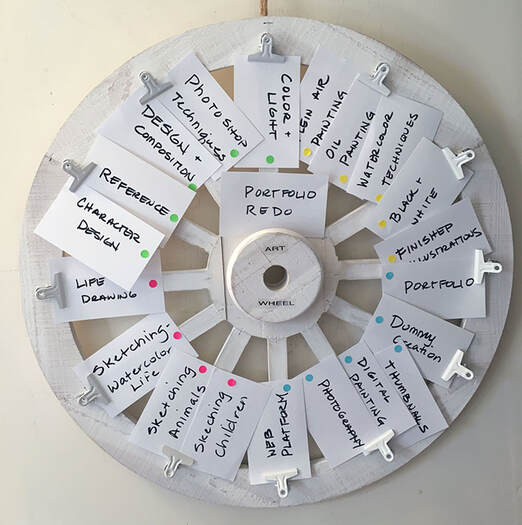
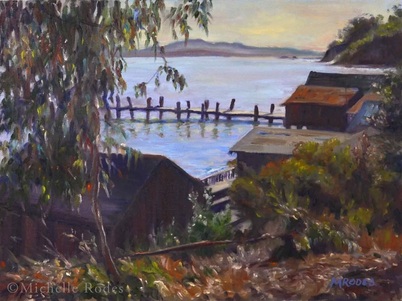
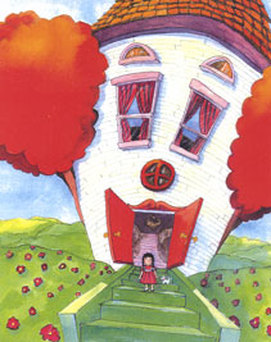
 RSS Feed
RSS Feed